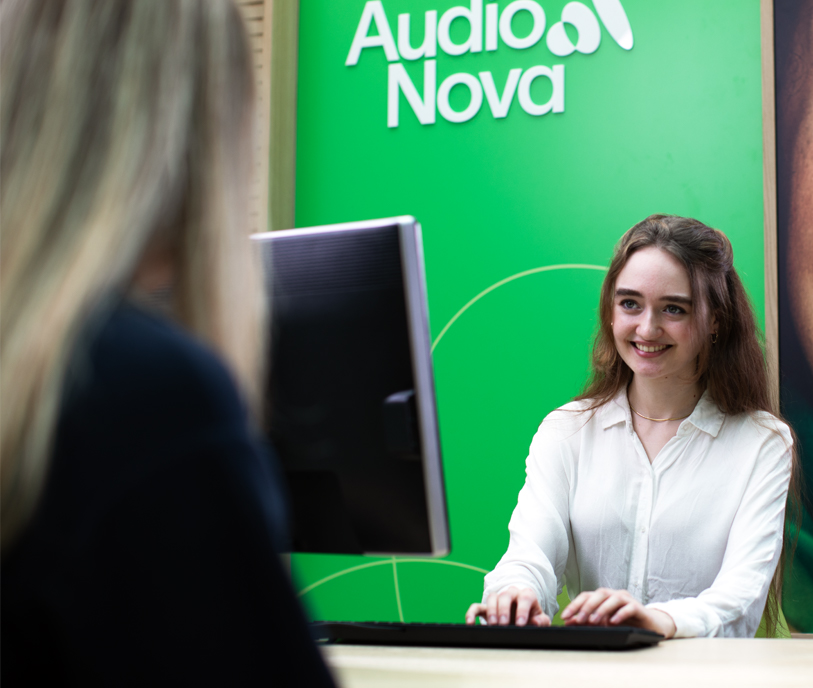Understanding Volume and Decibels


Understanding Volume and Decibels
5 min
Published August 29, 2024
Hearing Protection – Understanding Volume & Decibels
Imagine the hum of your household vacuum or the bustling noise of rush hour traffic. Sounds surround us every day, but how do we know which ones can harm our ears? Volume is measured in decibels (dB), and each sound has a specific dB level. Everyday sound like conversation or a washing machine falls in the safe range.
More intense noises, such as rock concerts or sirens, can reach levels that might damage our hearing over time. Understanding volume and decibels helps us know when it's crucial to use hearing protection. Let’s explore common sounds and how to keep our ears safe.
How We Measure Volume
Volume is measured by assessing the sound pressure level, which we express in units called decibels (dB). When you hear a sound, it's the result of air pressure oscillations that travel through the air and impact your eardrums. These oscillations convert into information within our brains, determining whether a sound is loud or soft. The more energy these sound waves have, the louder we perceive the sound.
The scale for measuring volume starts at 0 dB, representing the faintest sound the human ear can detect. Conversational speech typically sits around 50 dB, comfortably within our hearing range. Volume levels rise significantly in environments with loud sounds, like concerts, which might reach 100 dB or more.
The scale isn't linear. An increase of 10 dB roughly corresponds to a doubling of perceived loudness. This is why protecting your hearing in noisy settings is essential. Various hearing protection devices, such as specialized earplugs, can help maintain a safe audio environment by filtering out harmful frequencies. Educating yourself on these protective options is key to preserving your hearing health.
The Decibel Scale
The decibel scale simplifies the complex calculations needed to measure sound pressure levels. This scale takes into account the unique way human hearing can differentiate subtle low-level sounds while being less precise with higher-decibel differences.
Specialized filters adjust specific frequencies based on our perception. The A filter, employed in dB(A) measurements, aligns better with how we perceive everyday sounds. Despite initially appearing linear, the decibel scale is logarithmic, meaning a small increase in decibels represents a substantial rise in sound pressure. For example, a circular saw’s noise isn’t just twice as loud as normal conversation. Its sound pressure is approximately 1,000 times higher. Everyday noises vary – rustling leaves are near 10 dB, a conversation hits 60 dB, while a concert could reach 110 dB. Recognizing these values helps us appreciate the need for hearing protection.
The Impact of Noise on Our Ears
We instinctively cover our ears when an ambulance or fire alarm blares nearby. This natural protective response highlights the dangers of loud noises. Research indicates continuous exposure to elevated noise levels can negatively affect hearing and overall well-being.
Here are some key points to consider regarding the impact of various decibel levels:
40 dB and above: Difficulty focusing and impaired learning ability
60 dB and above: Prolonged exposure poses a risk of hearing damage
65 dB and above: Increased likelihood of cardiovascular issues with extended exposure
85 dB and above: Persistent loud environments may lead to permanent hearing loss
120 dB and above: Immediate threat of hearing damage, even with brief exposure
Occupations at Risk for Hearing Damage
People working in noisy environments face a significant risk of hearing damage. Professions like construction, forestry, and factory work often involve constant exposure to harmful noise levels. Professional musicians and bartenders in loud nightclubs are also vulnerable. These occupations put individuals at greater risk of permanent hearing loss due to prolonged exposure to high-decibel sounds like power tools, machinery, and amplified music.
Tips for Protecting Your Hearing
Protecting your hearing from noise damage requires some practical steps. Lower the volume on your headphones to a safer level. Keep a safe distance from loud noise sources, whether at a concert or a construction site. Use earplugs in high-noise environments and cover your ears if a sound feels overwhelming. Routine hearing tests can catch early signs of hearing loss, ensuring timely care and treatment. Simple actions can go a long way in preserving your hearing health.
AudioNova offers an extensive range of hearing protection products for all age groups. From convenient, off-the-shelf options to custom-fit solutions, our products cater to diverse needs and preferences. Each protection device is designed to ensure comfort and effective noise reduction, helping everyone maintain optimal hearing health. Explore our reliable and innovative offerings to find the perfect fit for you or your loved ones.




